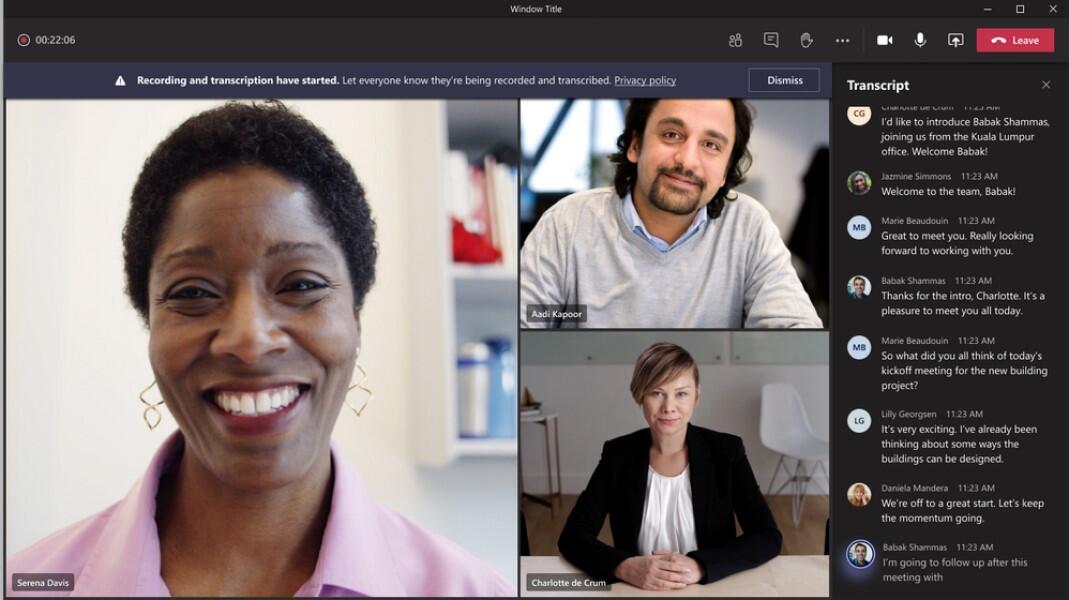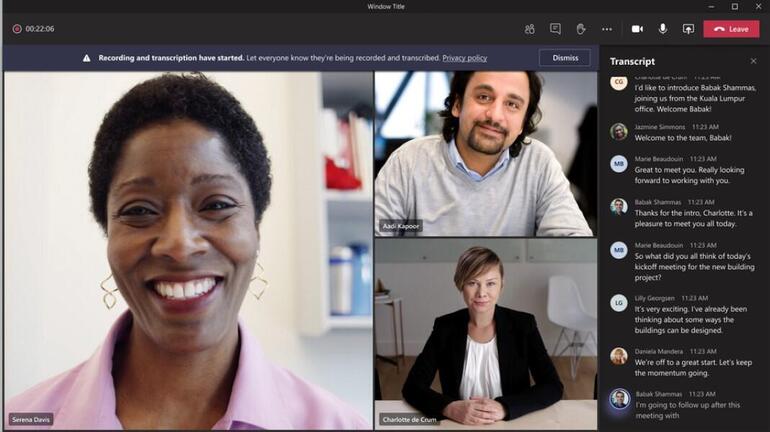Microsoft Teams now features live transcription with speaker attribution, so even if you miss a meeting, you’ll still be able to stay informed.
” data-credit=”Image: Microsoft”>
Live transcription with speaker attribution is now available in Microsoft Teams.
Image: Microsoft
Most of us are suffering from video conferencing burnout at this point. Once you hit your fourth or fifth meeting of the week, it’s hard to keep track of who said what, and when.
Microsoft feels your pain, and has launched a new feature for Microsoft Teams that creates a written record of what happens during a meeting so you can stay clued up on proceedings if you miss one, join late, or drift off halfway through. Because let’s face it, it happens.
Live transcription in Microsoft Teams identifies each speaker, captures what they say in “near” real-time and then generates a write-up of the meeting that users can access either during or after it takes place.
The feature uses the information held inside a Teams meeting invitation – such as the name of participants and any attachments – to improve the accuracy and recognize meeting-specific jargon for each transcript.
Microsoft says this minimizes the need for human involvement – although the company helpfully notes that “live transcription is not guaranteed to be 100% accurate and so should not be relied upon in life-altering situations.”
SEE: TechRepublic Premium editorial calendar: IT policies, checklists, toolkits, and research for download (TechRepublic Premium)
To use live transcription, Teams tenant admins need to first to activate the ‘Allow Transcription Policy’. From there, the meeting organization or presenter can simply turn on the feature from the drop-down menu within the Teams meeting window; live transcription sits just below the ‘Start recording’ option.
To cater to privacy practices, participants are notified if live transcription has been activated for a meeting, much as it does when a meeting is being recorded. Attendees have the option of turning off speaker attribution if they don’t wish to be identified.
After the meeting, the saved transcript is available for reference and download in Teams for desktop and web. It’s also available in the meeting event in Teams calendar, as well as through the transcript tile in the chat.
Nobody at Microsoft is able to view the content of a meeting, the company said. Similarly, Microsoft does not use the live transcription data for improving its own AI models, and each model is automatically deleted after each meeting.
SEE: Top Windows 10 run commands (free PDF) (TechRepublic)
Teams live transcription files are stored in the meeting organizer’s Exchange Online account and only the organizer and tenant admin have permissions to delete them.
Live transcription is currently available for Microsoft’s public cloud customers with licenses for Microsoft 365 E3, Microsoft 365 E5, Microsoft 365 Business Standard, in addition to Microsoft 365 Business Premium SKUs. Live transcripts for channel and Meet Now meetings are in the pipeline, the company said.
Transcripts are also available via Teams’ Meeting Recap feature, which also collates an audio recording alongside notes and shared files and makes them available to participants post-meeting.
“Delivering highly accurate, AI-based live transcriptions for Teams meetings has been a massive and rewarding effort across the company,” said principal program manager, Shalendra Chhabra.
“With this powerful foundation built at scale, we’re ready to tackle the next set of challenges to keep improving inclusivity, accessibility, and productivity in Microsoft Teams meetings.”
For everything you need to know about Microsoft Teams, be sure to check out TechRepublic’s comprehensive Teams How-to Guide.

